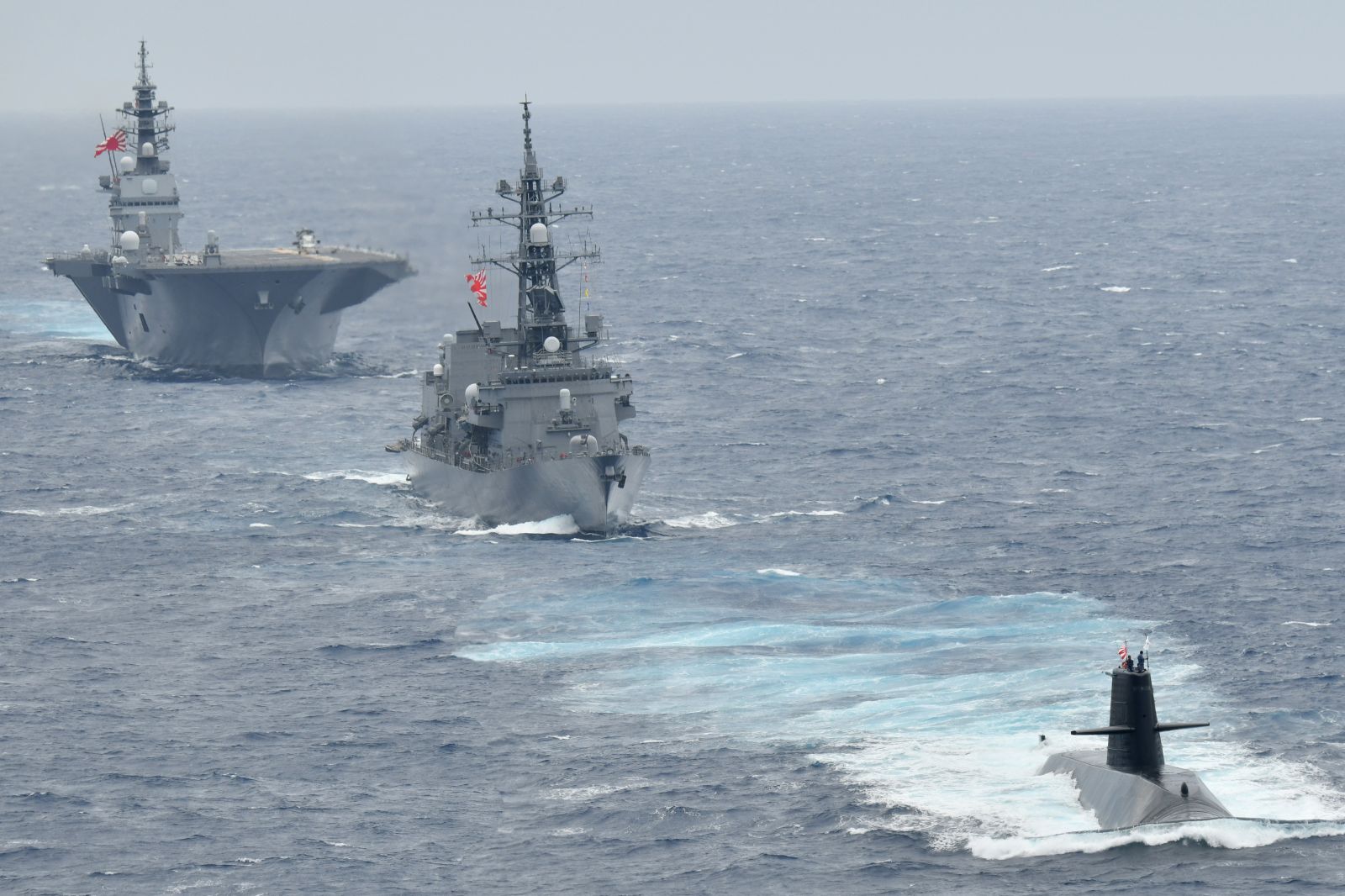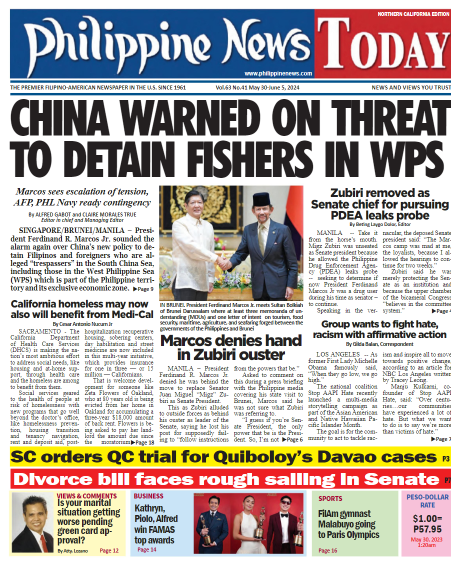PHL,US, Japan stage joint maritime drill, hold talks flagging ‘unlawful’ Chinese behavior in South China Sea
MANILA/WASHINGTON/TOKYO – The Philippines, United States and Japan raised “serious concerns” over China’s repeated blocking and harassment of Philippine vessels in the West Philippine Sea during their inaugural trilateral maritime talks in Japan.
The dialogue held on December 10, was chaired by Foreign Affairs Assistant Secretary Ma. Theresa Lazaro, US National Security Council Senior Director and Special Assistant to the President Mira Rapp-Hooper, and Japanese Assistant Foreign Minister Nakamura Ryo, PNA reported.
In a readout, the US State Department said the three sides expressed concerns about China’s “dangerous and unlawful behavior in the South China Sea,” saying this threatens the freedoms of navigation and overflight of all nations.
The three states reaffirmed their commitment to upholding international law as reflected in the 1982 Law of the Sea Convention.
The Department of Foreign Affairs (DFA) said this inaugural dialogue was a “significant milestone in demonstrating the deepening cooperation of the Philippines, Japan and the US on maritime concerns”.
The talks, it said, reflected the three nations’ “enduring commitment to uphold a free, open and secure Indo-Pacific through the rules-based international order”.
At the dialogue, the three sides also had “open and dynamic discussions” on strategic perspectives on regional maritime issues, institutionalizing trilateral cooperation, and future policy plans, among others.
Maritime cooperative activities with other partners were also floated, including combined trainings, maritime law enforcement and coast guard capacity building.
“They emphasized that the trilateral maritime dialogue will serve as a durable foundation for coordination and cooperation in addressing challenges and complexities of the regional maritime landscape,” the DFA said.
The inaugural Trilateral Maritime Dialogue was an outcome of the first-ever Philippines-Japan-US Trilateral Summit held in April this year.
At its conclusion, Lazaro announced the Philippines’ willingness to host the Second Trilateral Maritime Dialogue in 2025.
_______________________
JOINT MARITIME DRILL
MANILA – The militaries of the Philippines, United States and Japan conducted a “multilateral maritime cooperative activity” (MCA) in the West Philippine Sea last Friday.
The joint activity took place within the Philippines’ exclusive economic zone, the US Indo-Pacific Command (INDOPACOM) said in a statement.
The US INDOPACOM said the MCA demonstrates a collective commitment to strengthen regional and international cooperation in support of a free and open Indo-Pacific.
“This builds upon previous MCAs and our continuing operations together, which strengthen the interoperability of our defense/armed forces doctrines, tactics, techniques, and procedures,” it added.
It also said the MCAs are conducted in a manner that is consistent with international law and with due regard to the safety of navigation and the rights and interests of other states.
Participating units included a US Navy P-8A Poseidon from Patrol Squadron 47; the Philippine Navy’s BRP Andres Bonifacio (PS-17) and a C-90 patrol aircraft and the Japan Maritime Self Defense Force Murasame-class destroyer JS Samidare (DD-106).
“The US, along with our allies and partners, uphold the right to freedom of navigation and overflight, other lawful uses of the sea and international airspace, as well as respect to the maritime rights under international law,” the US INDOPACOM said.
The last MCA took place on Sept. 28 and involved the Philippine Navy’s BRP Antonio Luna (FF–151), BRP Emilio Jacinto (PS35), one AW-109 helicopter, and Philippine Air Force search and rescue assets, alongside the United States’ USS Howard (DDG-83) and two helicopters; Australia’s HMAS Sydney (D48), a P-8 Poseidon aircraft, and one helicopter; Japan’s JS Sazanami (DD-113); and New Zealand’s HMNZS Aotearoa (A-11).
The Armed Forces of the Philippines (AFP) said Friday’s MCA, the 5th for this year, included a range of coordinated operations designed to enhance interoperability and strengthen maritime capabilities.
Activities conducted during the exercise included a communications check to ensure seamless coordination, a Subject Matter Expert Exchange (SMEE) and pre-sail conference to align operational objectives.
Photo and division tactics exercises were also conducted. These drills emphasized collaborative defense strategies and reinforced the commitment of the participating forces to maintain regional security and stability.



















